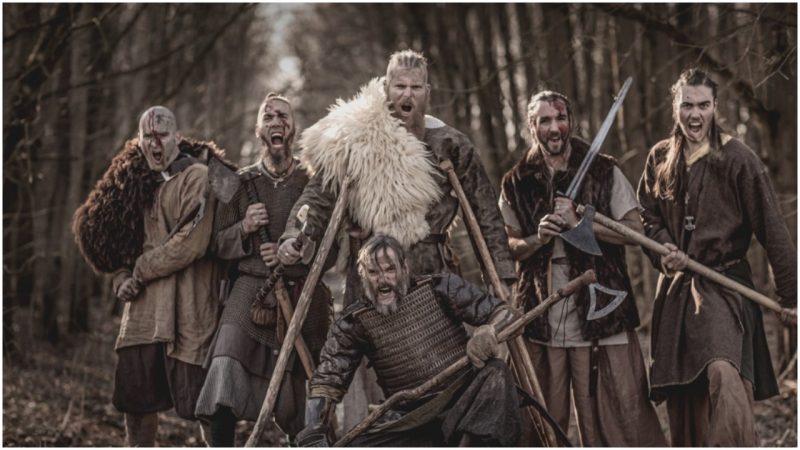Coast of Norway, 976 AD: Crowded smoke filled room. Two men on a raised platform, sweating under the lights, worse for drink, with the crowd egging them on.
The first man speaks: “Halfdan, your mother is so ugly that when her father offered her to the giants as a bride, they paid him to take her back home!” Raucous laughter. Second man: “Oh ja? Well, your mom is so fat, she doesn’t have a long-house, she has a wide-house!”
Yes, Viking culture, just like others around the world, played insult games at parties. Most of the time, they ended peacefully.
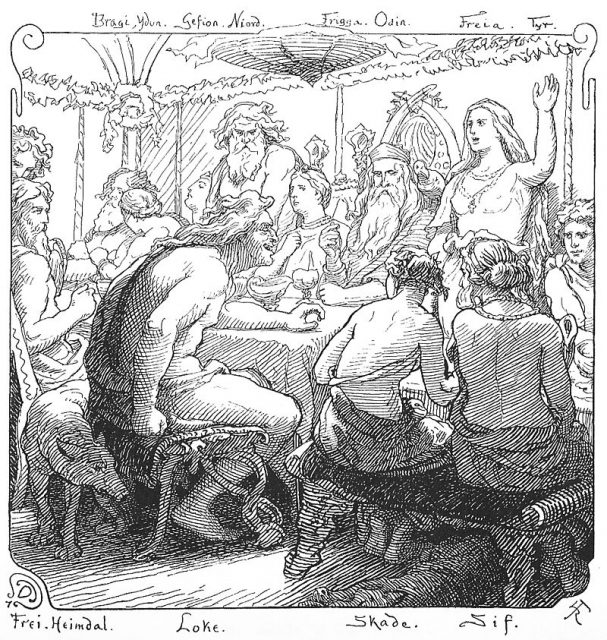
One of today’s popular phrases is “Drop the mic.” When someone delivers a stunning performance, result, or outdoes someone else, they figuratively or literally “drop the mic” and walk off, leaving everyone dumbstruck.
Another saying with a similar meaning is “Drop the hammer,” or “The hammer is going to drop,” when someone is about to deliver that same type of performance. “Boy, he dropped the hammer on you!” Could Vikings have been the first to use the phrase “drop the hammer”?
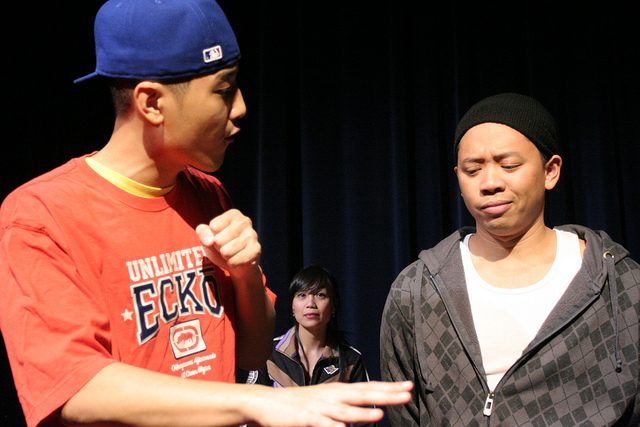
In that case, it would have had a double meaning – both that you were about to be in a tight spot and/or the god Thor was about to make your life more complicated.
Viking culture was pre-literate. They used runes, which some people knew, but these symbols were not flexible enough to convey much more than very basic information.
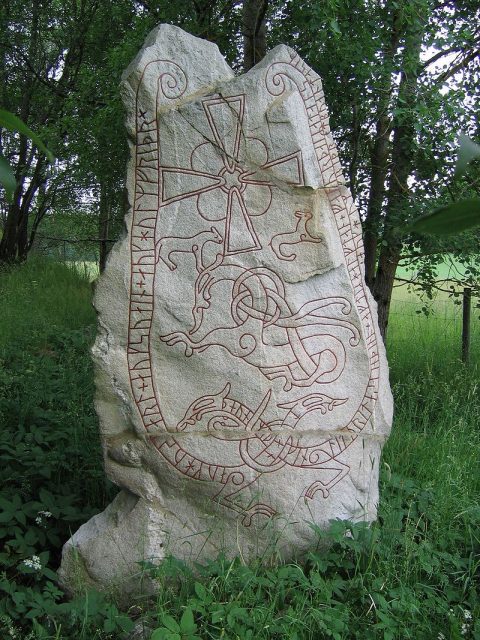
Therefore, like many other tribal groups around the world, the Vikings relied on memory. The people that made great Viking events into poems or songs were the bards (“skalds” in Old Norse). To make it easier for them to remember the ever increasing number of stories and battles, the skalds learned to make their language more colorful and descriptive.
This was also a reflection of actual life, because in an age with no TV, no books, no real theater, the Vikings spent a lot of time drinking and looking into the fire on cold winter nights. To liven things up, friends livened up their language, and insulted each other in comic ways.
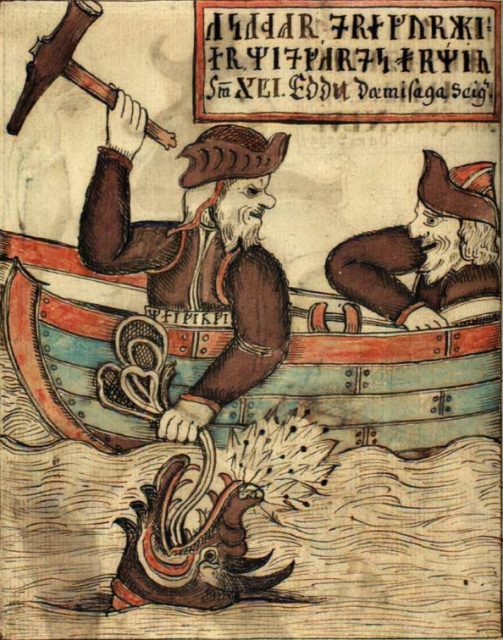
This was called “flyting” – literally, “to quarrel” or “provoke.” Today, this tradition lives on in the “yo’ mama” joke, or the celebrity roast. Most of the participants know beforehand what the rules are, and what lines are not to be crossed.
It was the same in Viking days. Most people think of Vikings as savages who answered any provocation with violence, but more often than not, the loser in a flyting battle was usually just subject to some ribbing, a bit of embarrassment and perhaps having to spot a round of drinks. Flyting took place with friends, not strangers. Along with flyting, many everyday English words come from the Vikings. Check out a video on Viking words still used in the English language:
https://youtu.be/TchiY6MSjm8
The man who engaged in a friendly battle of words and resorted to violence was thought of as uncouth and not very clever – and in the Norse tales of the gods, many of the gods and goddesses were praised for being clever and able to outsmart their rivals. Being clever was considered a real virtue.
Viking society was tribal and based on family and clan loyalty. If your drunken cousin got mad at someone for a comic insult and did them harm, they might have just dragged you into a blood-feud that could go on for years.
It didn’t pay for entire villages to start killing each other in the middle of winter out of boredom, when in the spring and summer they would need every man for raiding or defense. Flyting was a way of blowing off steam, and just like today, one had to know his or her limits.
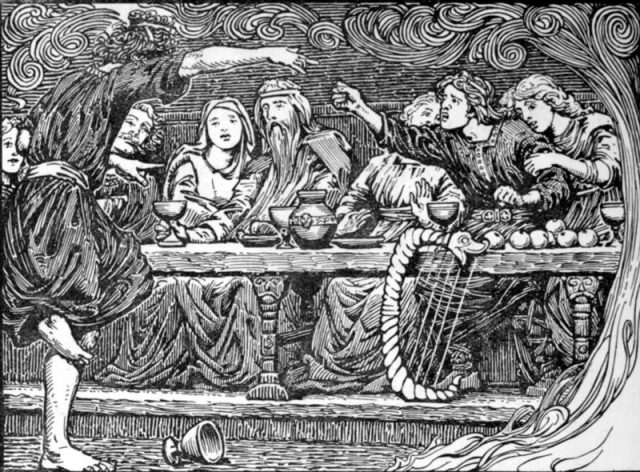
Viking skalds recorded great events, arguments and stories, and they recorded the insults of the gods for posterity too. Some of what we know of the Norse pantheon comes from the stories of flyts mentioned in the sagas between Loki, the God of Mischief, and the other gods of Asgard.
To make matters more interesting and easier to remember, the Vikings in Scandinavia and the Anglo-Saxons in England used “kennings” – a compound expression with a metaphorical meaning. For instance, a “wave-traveler” was a boat. “In the midst of shield-storm” could mean “in the midst of battle.”
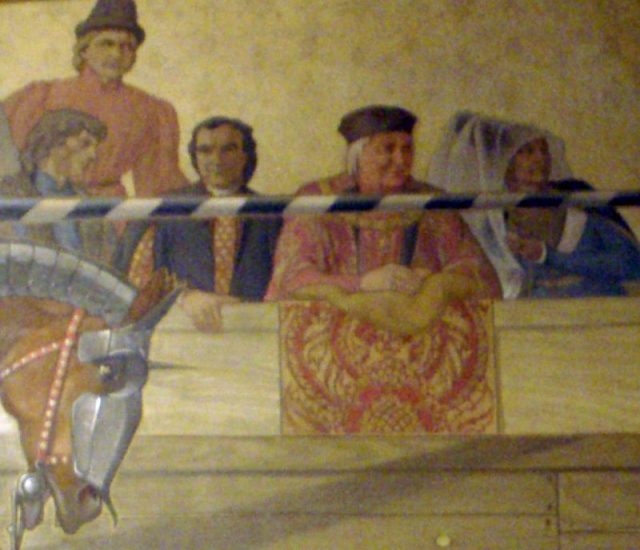
A sword was mostly just a sword…or was it? A kenning for sword might be “feeder of ravens,” for the birds that feasted on the dead after battle.
Read another story from us: Vikings in Minnesota? The Mystery of the Kensington Runestone
Of course, just like today, boys will be boys, especially after a few ales, so in that dark, torch-lit room one thousand years ago, one warrior might have “dropped Thor’s hammer” on another by telling him that his sword wasn’t a feeder of ravens, but perhaps more like a feeder of doves – oooh, them’s fightin’ words!
Matthew Gaskill holds an MA in European History and writes on a variety of topics from the Medieval World to WWII to genealogy and more. A former educator, he values curiosity and diligent research. He is the author of many best-selling Kindle works on Amazon.
